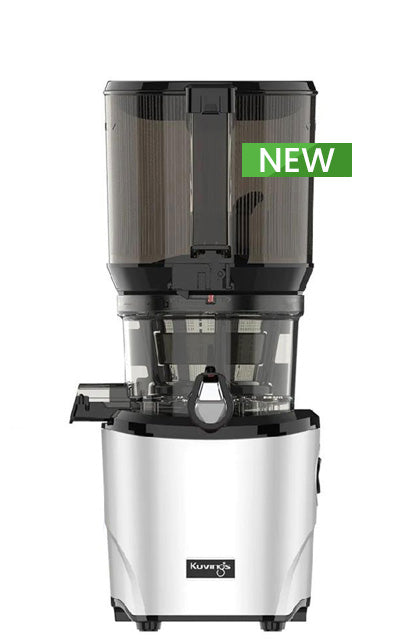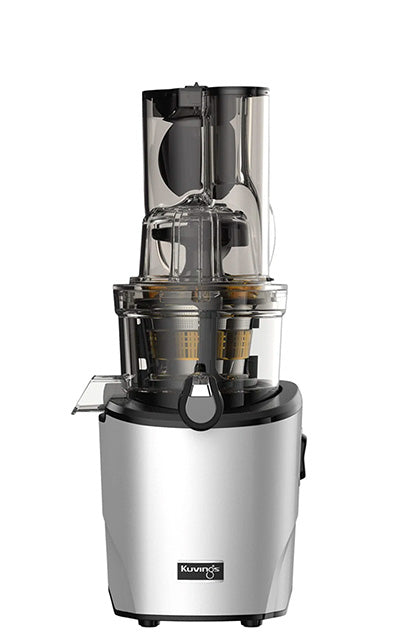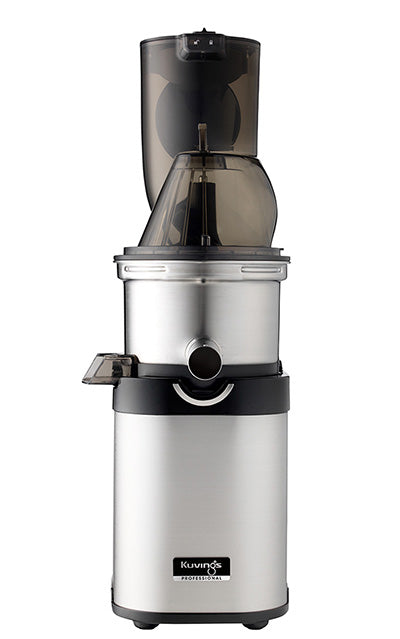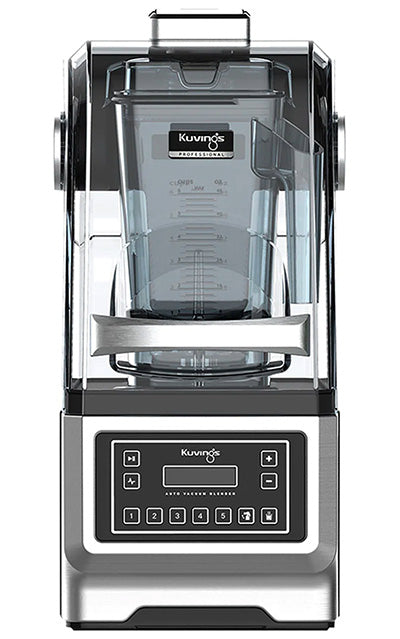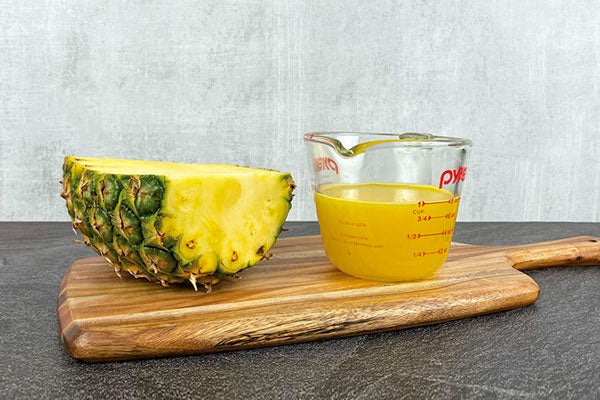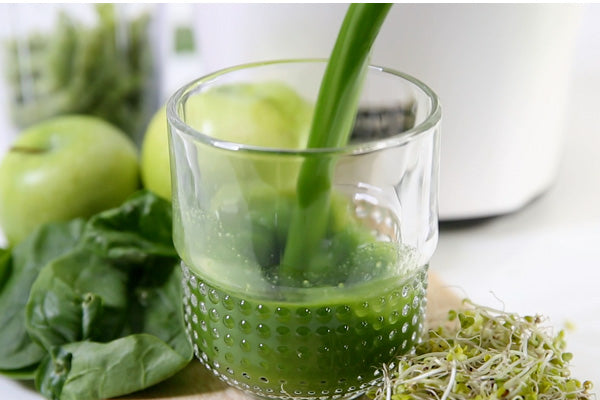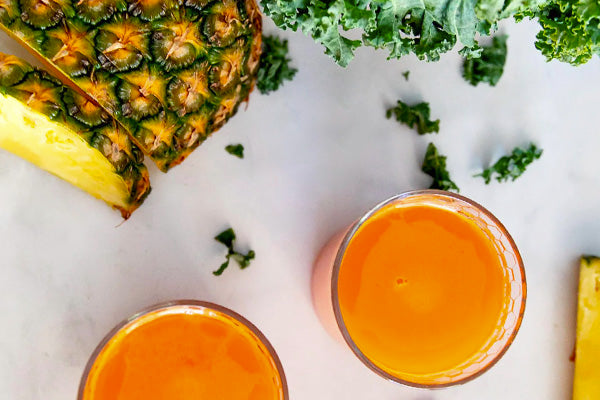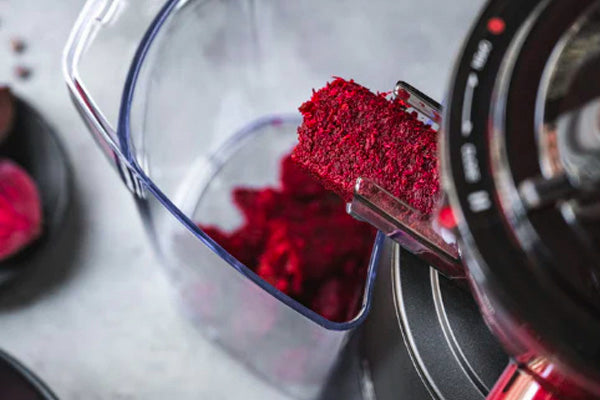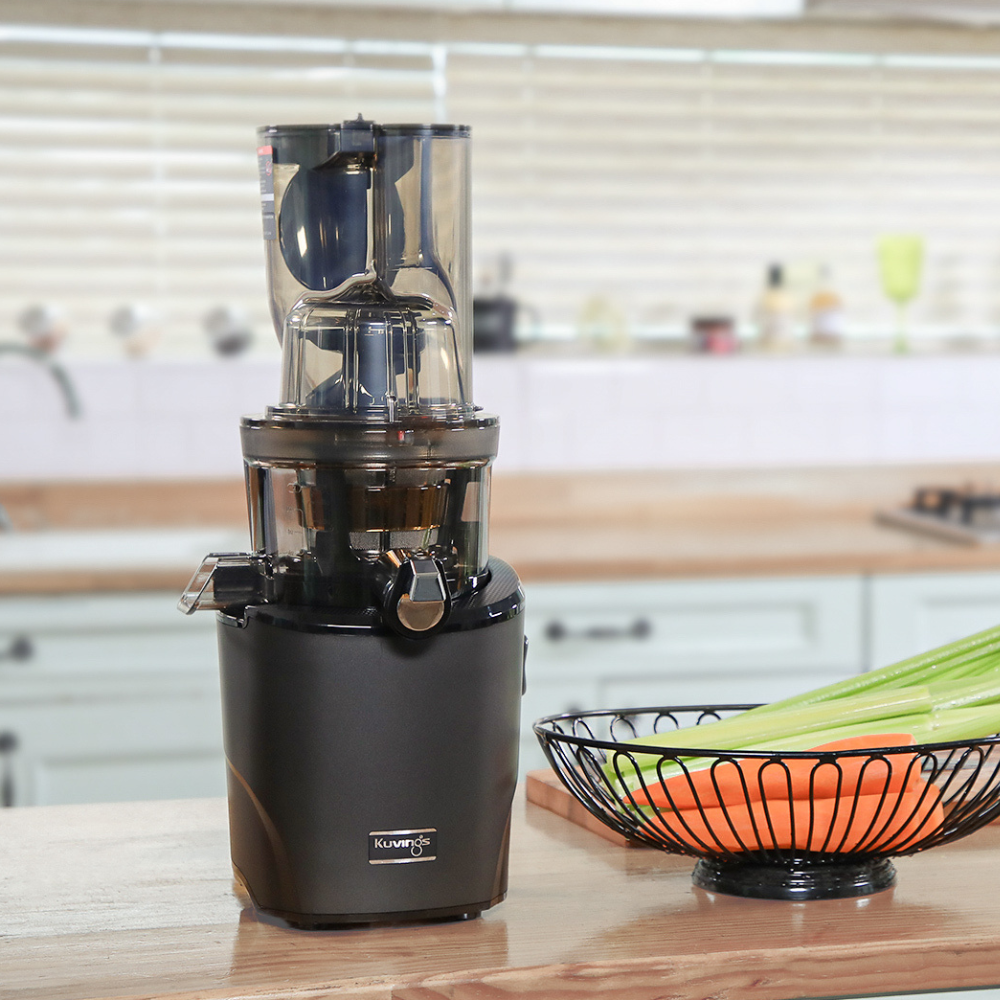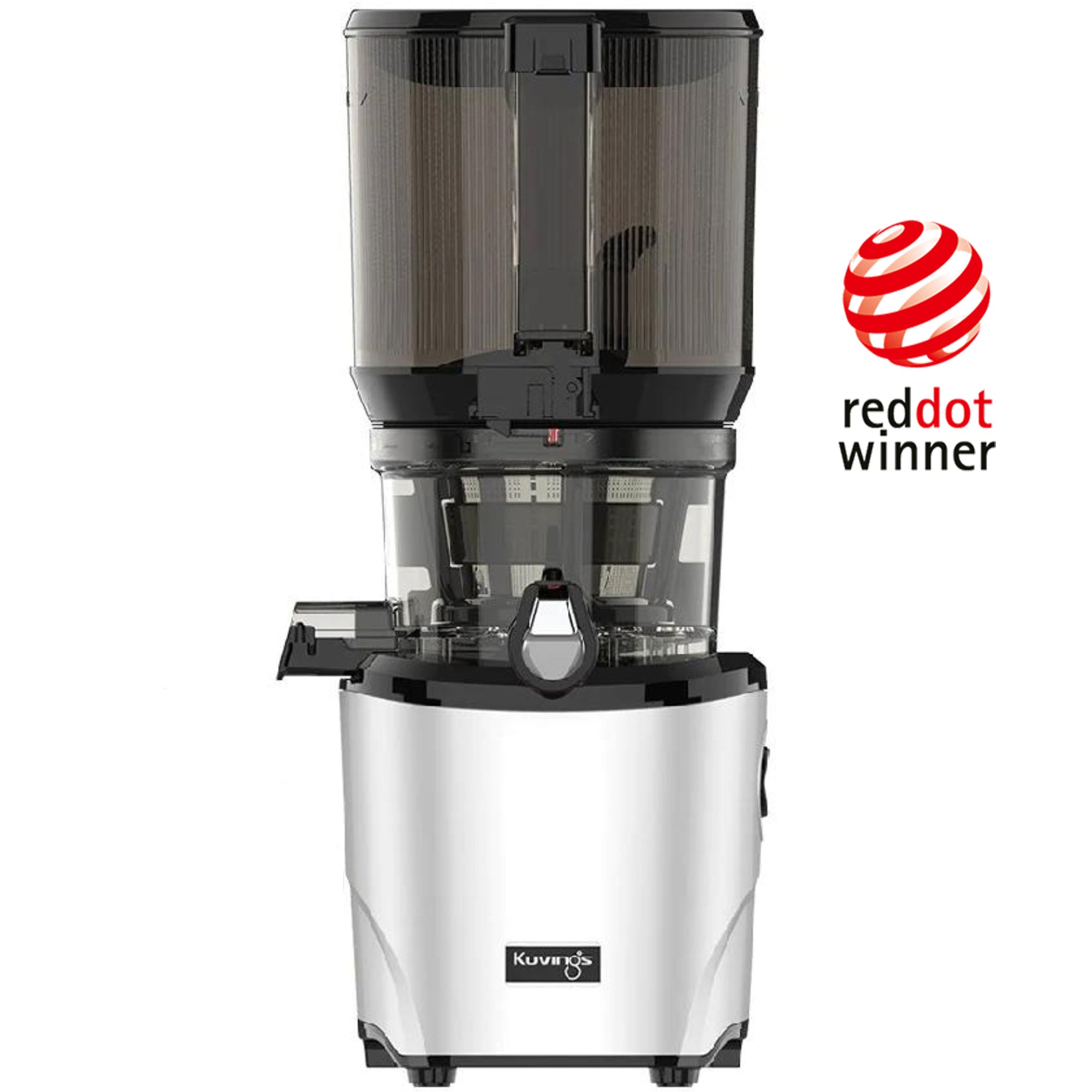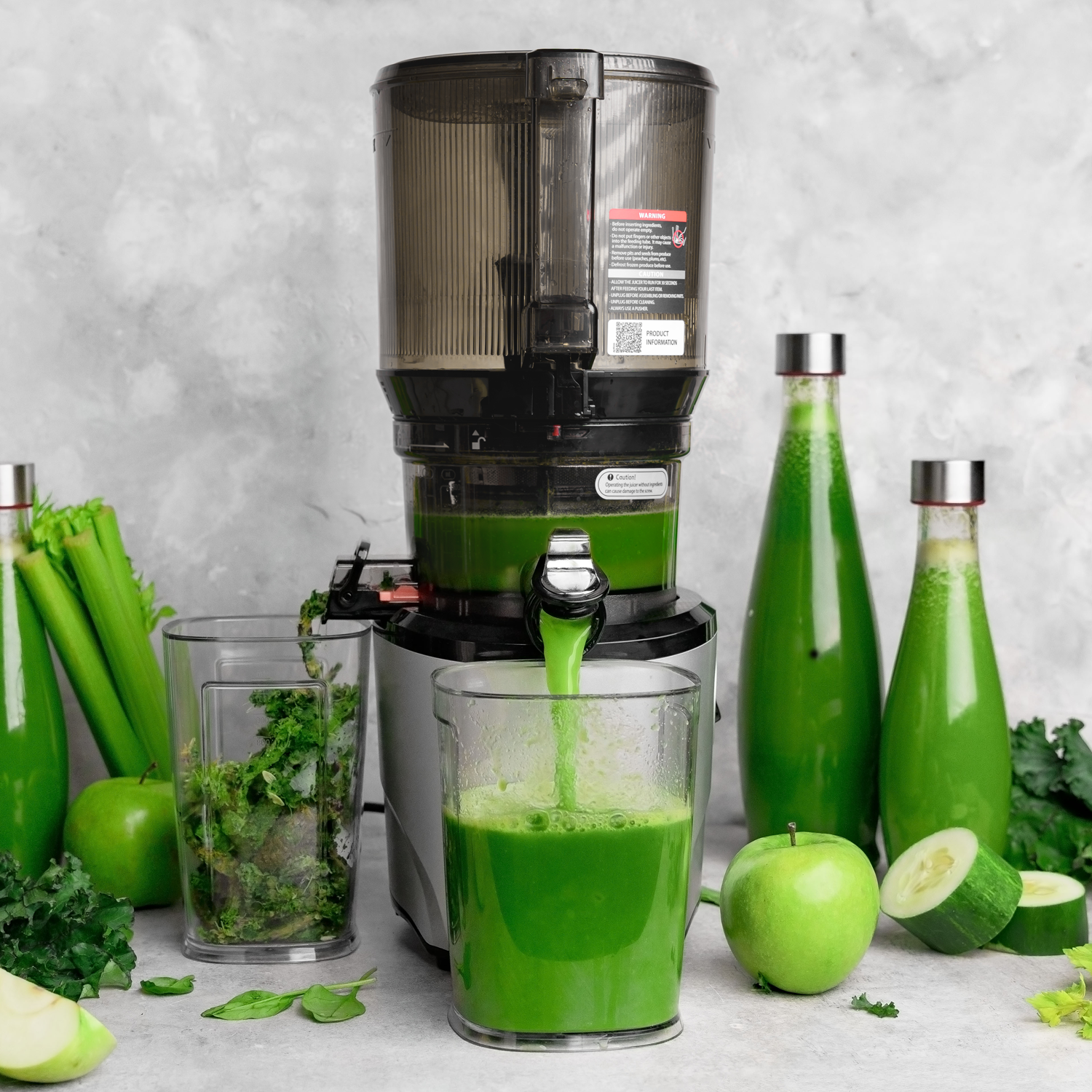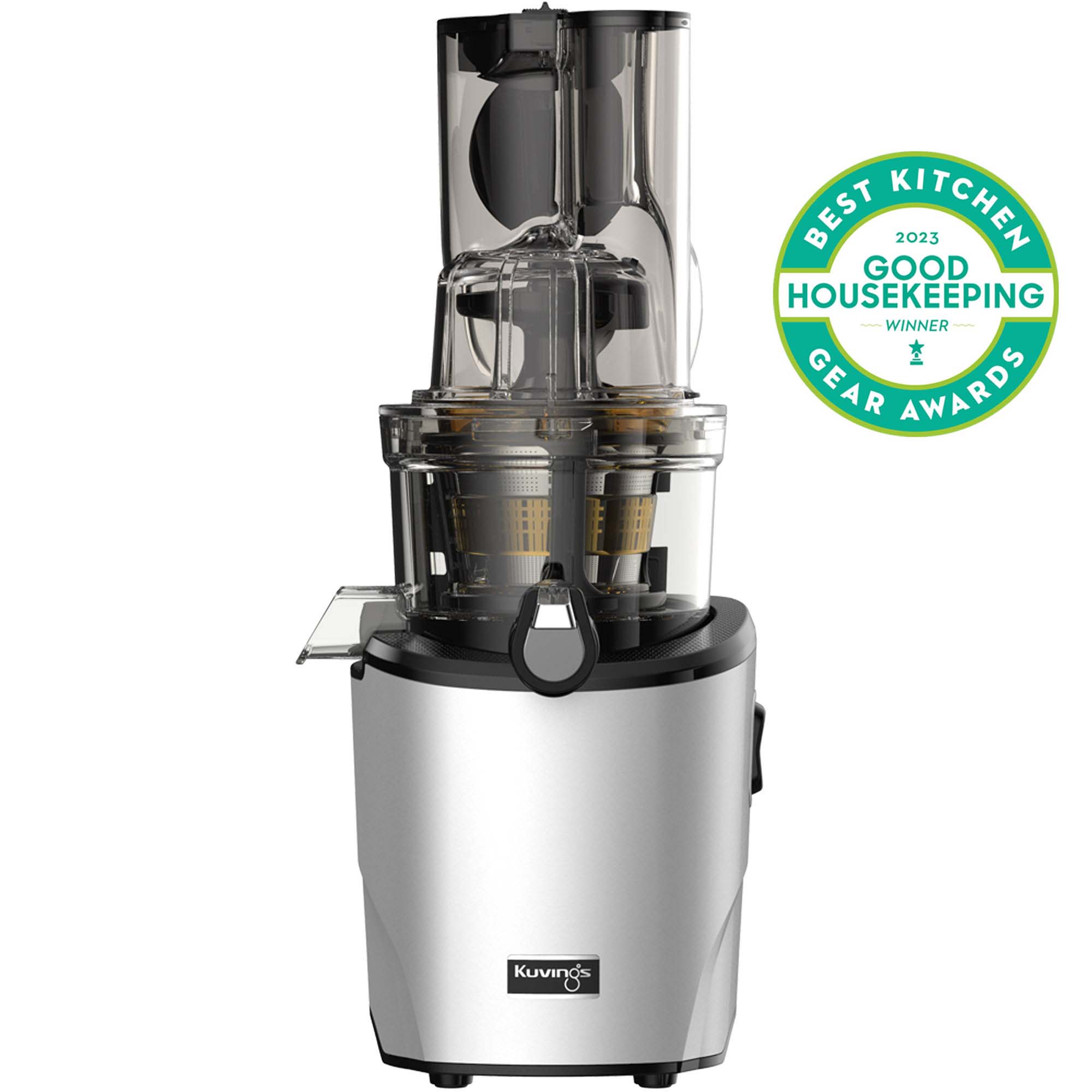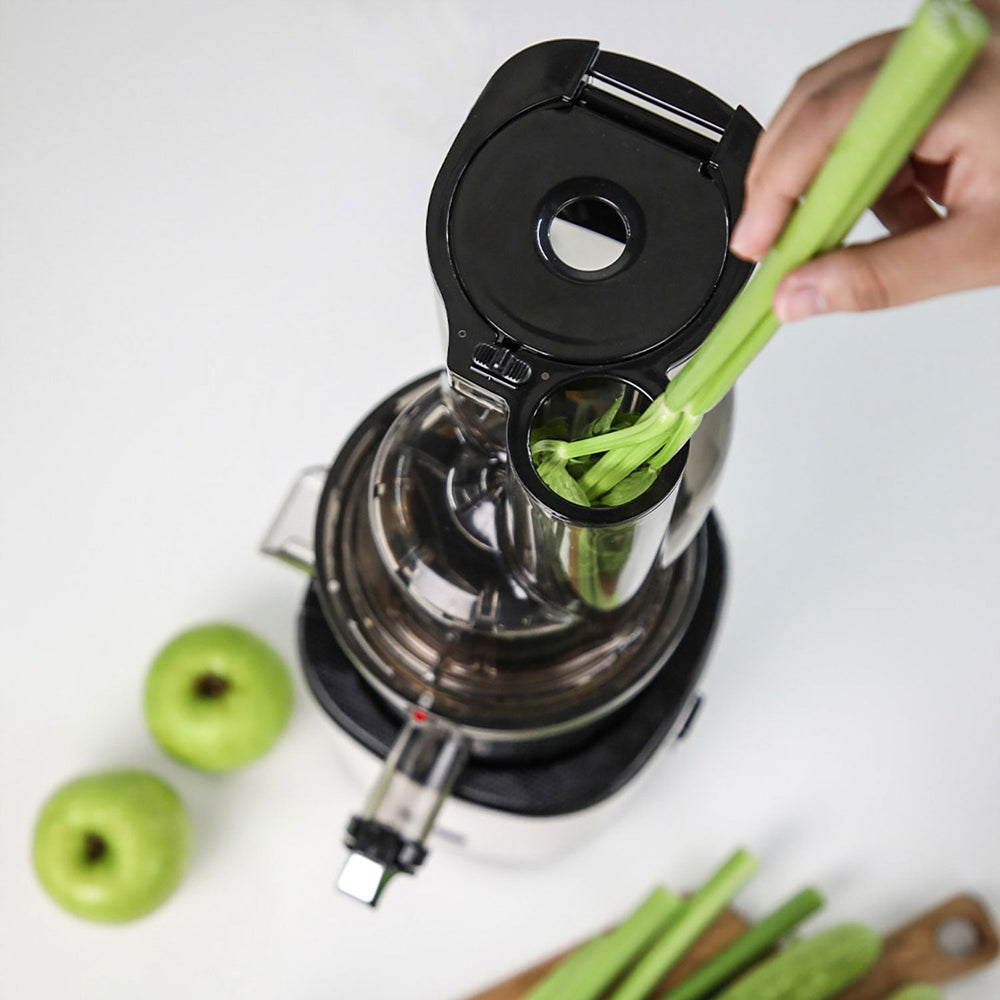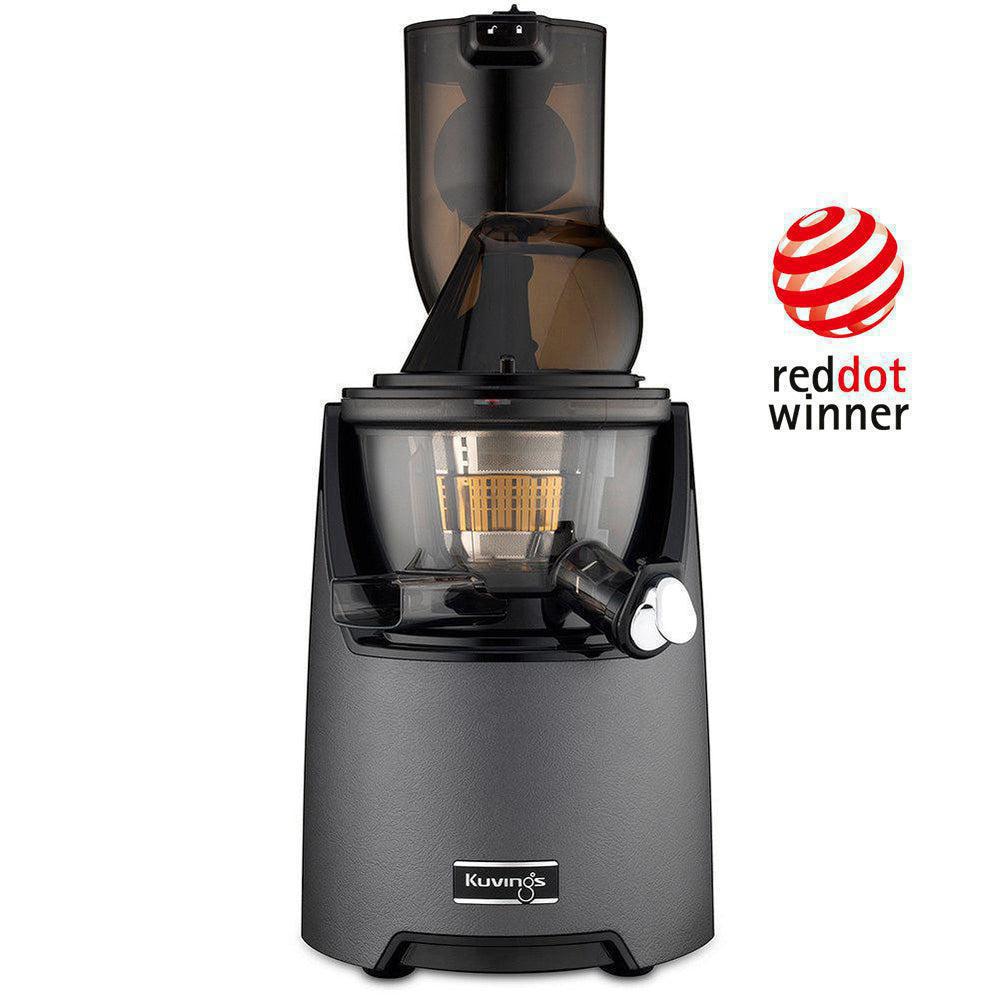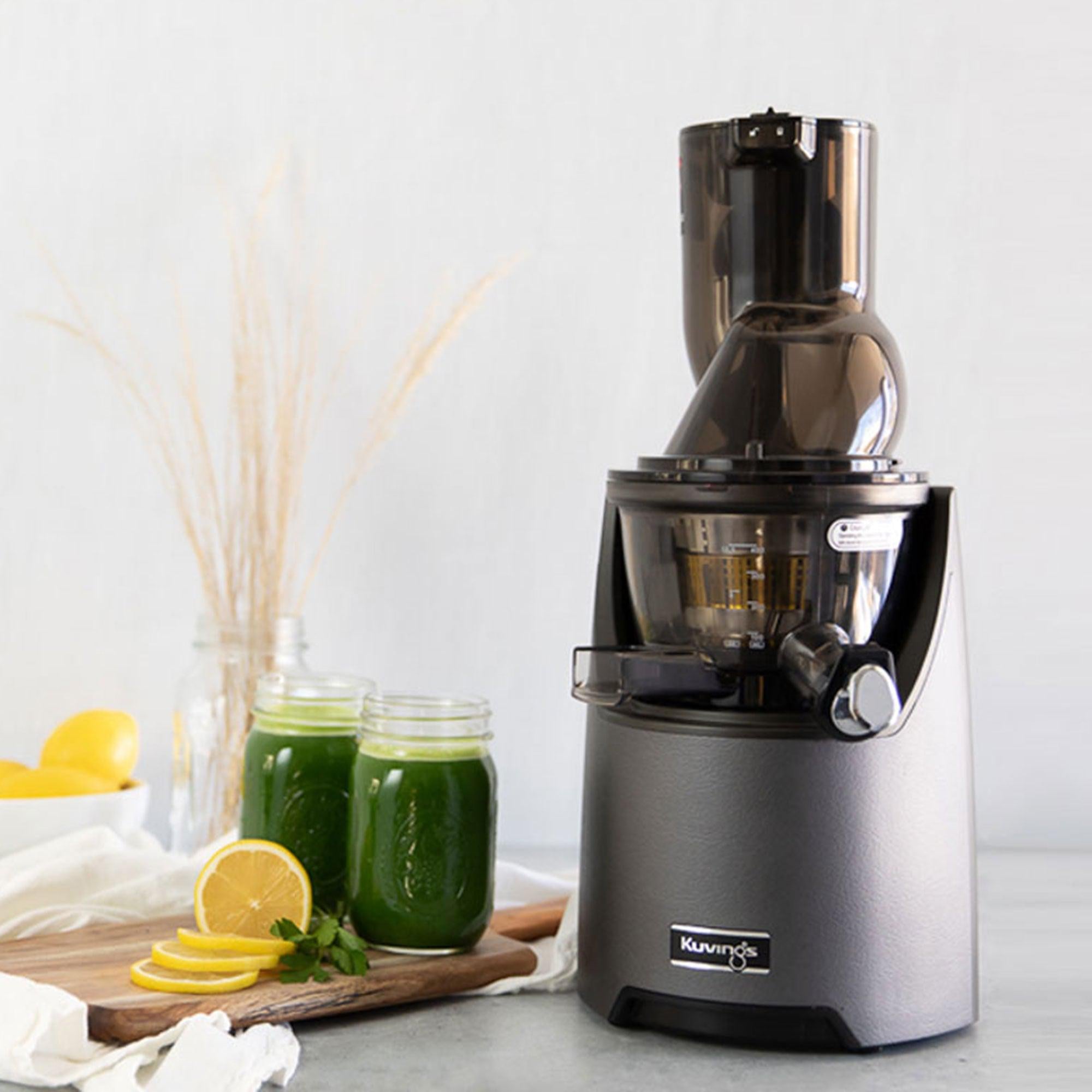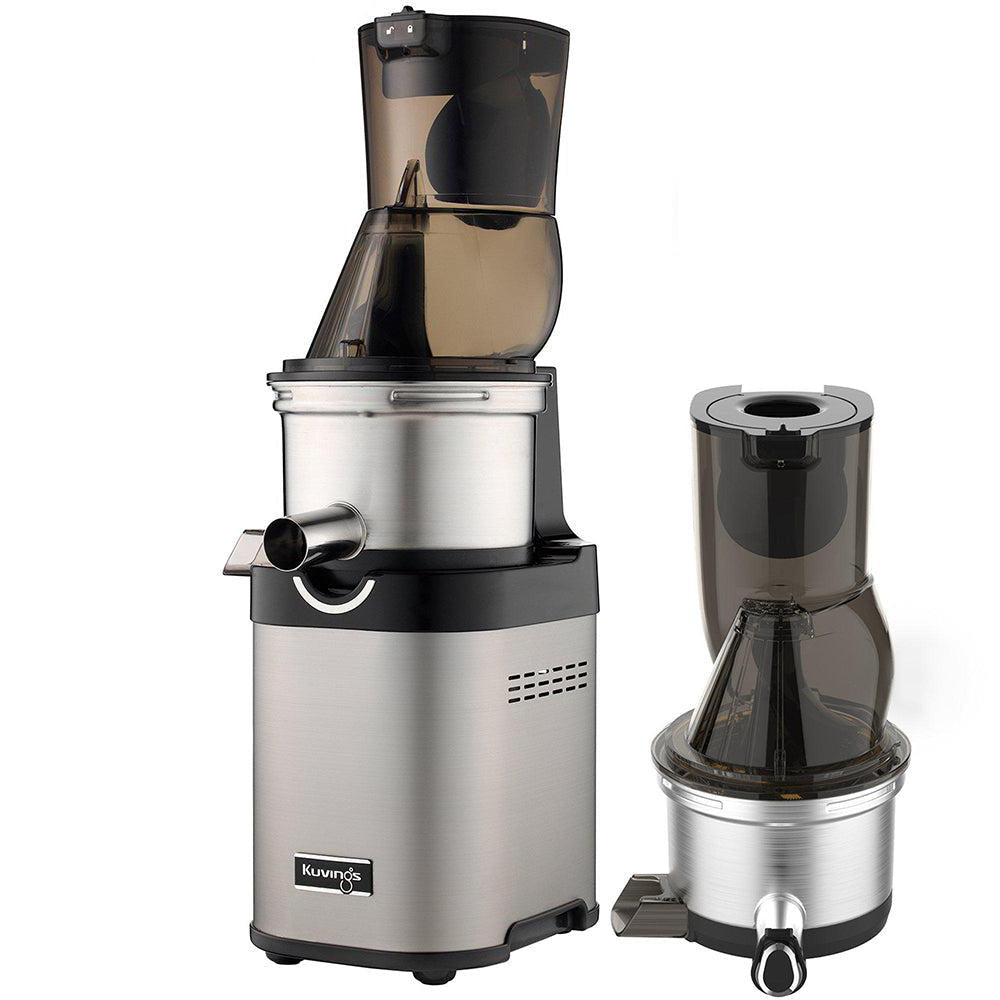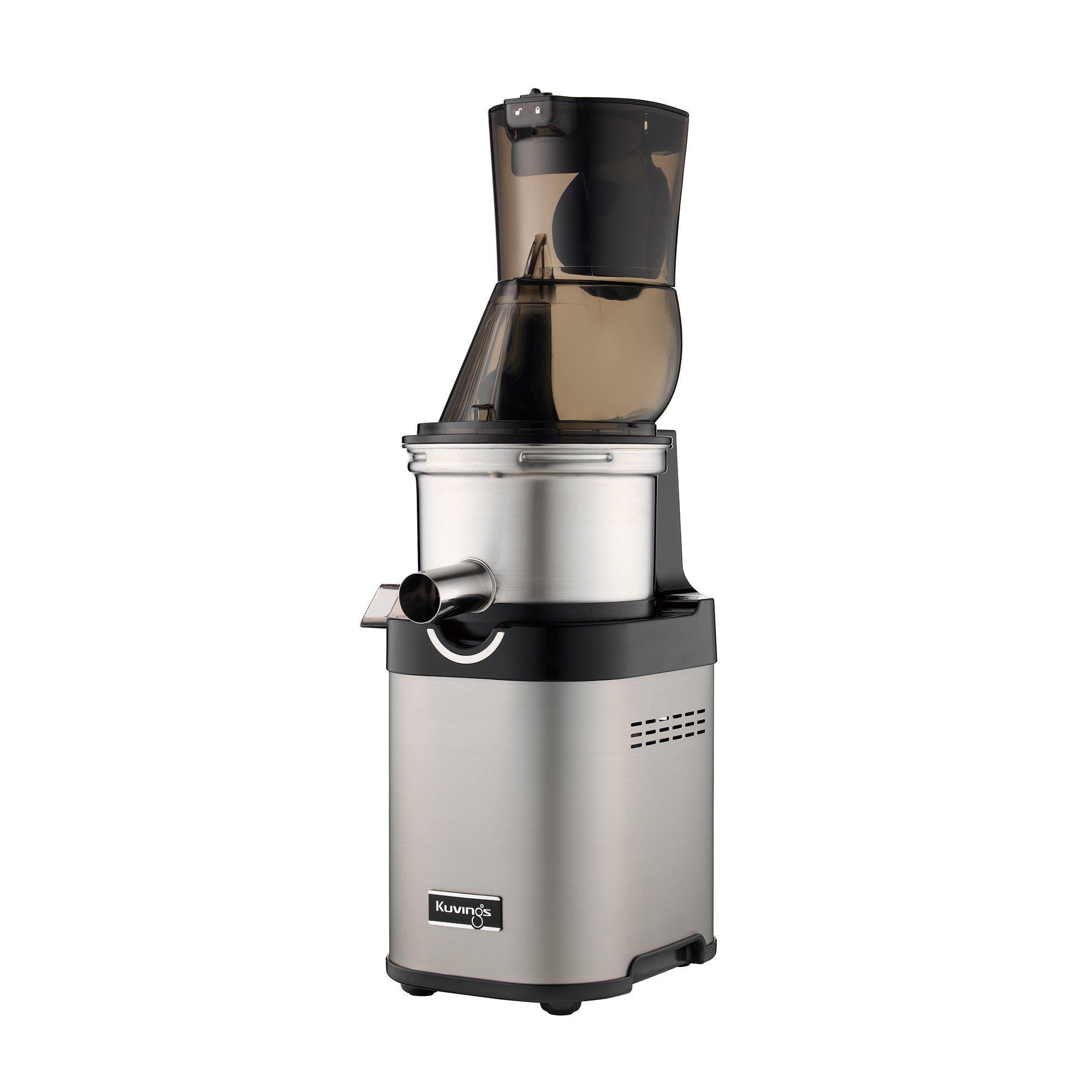If you're new to juicing and slow juicers, this article provides insights into the concept of slow juicing with a comparison between slow juicers and high-speed juicers.
About Slow Juicers
A slow juicer, also known as a masticating juicer, uses a heavy auger to crush ingredients and press them against a strainer, typically functioning at a low speed (40-60 rpm).
The term 'masticating' derives from 'masticate,' meaning 'to chew,' as the slow juicing process mirrors the way we chew our food.
The operation of a slow juicer has various impacts on the following aspects:
1. Nutrient Preservation
Many people juice for nutrients, so there's concern that the introduction of heat during juicing can lead to the breakdown of essential nutrients and enzymes.
High-speed juicers, which operate at speeds about 10,000 rpm, introduce heat due to the rapid rotation, creating friction in the process. The heat can lead to the deterioration of nutrients and enzymes.
Conversely, the advantage of using a slow juicer lies in its slow and gentle crushing and squeezing of ingredients, which doesn’t generate heat, thus ensuring the preservation of valuable nutrients and enzymes.
2. Oxidation
Oxidation, a chemical reaction triggered by exposure to oxygen, can have negative effects on juices.
Juices may undergo a change in color and taste, reduced shelf life, and diminished nutritional value.
While oxidation is inevitable during juicing due to air exposure, opting for slow juicers minimizes this process thanks to their slow auger rotation.
The slow extraction introduces less oxygen into the juicing process, resulting in reduced oxidation.
3. Yield
Slow juicers are known for their high yield and dry pulp due to the dual crushing and pressing process, maximizing juice extraction from your ingredients.
Reduced oxidation in slow juicers also leads to less foam and slower separation, resulting in a cold-pressed juice that boasts a smooth and rich taste.
4. Time
Despite their name, slow juicers operate efficiently and can quickly produce juice within seconds.
Furthermore, these juicers offer extended operating periods, typically lasting around 30-45 minutes before requiring a brief pause.
5. Volume
Slow juicers are known for their quieter operation compared to high-speed juicers, thanks to slow juicers’ reduced induction motors that operate quietly.
6. Cost
Slow juicers range from budget-friendly options starting at $50 to premium models reaching as high as $700, with the average price falling in the mid-hundreds range.
Before assuming that purchasing pre-made cold-pressed juices from a store or juice bar is more economical than investing in your produce and slow juicer, take a moment to explore the comparison.
Slow Juicers vs. High-Speed Juicers
We summarized the qualities of each type of juicer in this convenient table.
Slow Juicers |
High-Speed Juicers |
|
|
Want to learn more about Kuvings and our slow juicers specifically? Read "The Value of a Kuvings Whole Slow Juicer".

